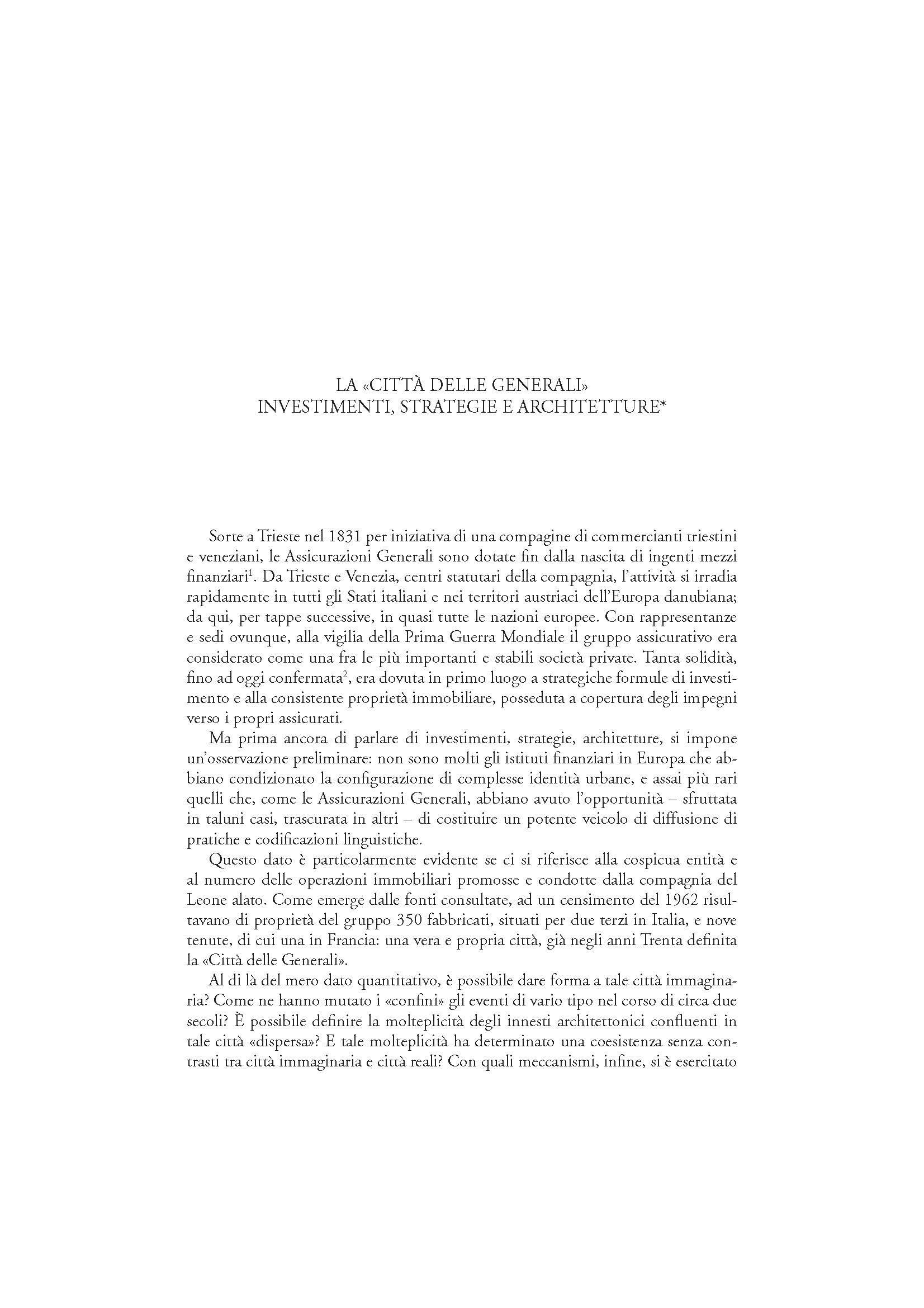La «città delle Generali»: investimenti, strategie e architetture
6,00 €
In 1833, a group of merchants from Venice and Trieste formed the «Assicurazioni Generali in Trieste». From the beginning, the Assicurazioni enjoyed consistent fi nancial means. From Trieste and Venice it rapidly spread throughout all the Italian States and the Austrian territories of Europe’s Danube basin and from here in successive steps, to almost all the European countries. By the eve of the First World War, the insurance group was regarded among the most important and stable fi nancial institutions. This degree of stability was given largely by strategic investment formulas and by relevant real estate holdings: in a 1962 census it was shown to possess 350 buildings, two thirds of which located in Italy, and nine estates, of which one in France: a veritable city, already referred to as the «City of the Generali» in 1930.Is it possible to attribute a shape to an imaginary city?
How have the events of various types mutated its «boundaries» during approximately two centuries? Is it possible to defi ne the variety of grafts and converging elements in such a «scattered» city? Has this plurality permitted a co-existence without contrasts? Finally, what mechanisms have exercised the actual control of the built spaces? The study attempts to answer these questions by comparing several case studies on one hand and on the other, by outlining a general reference framework within which the culture of the management groups may be understood.
In 1833, a group of merchants from Venice and Trieste formed the «Assicurazioni Generali in Trieste». From the beginning, the Assicurazioni enjoyed consistent fi nancial means. From Trieste and Venice it rapidly spread throughout all the Italian States and the Austrian territories of Europe’s Danube basin and from here in successive steps, to almost all the European countries. By the eve of the First World War, the insurance group was regarded among the most important and stable fi nancial institutions. This degree of stability was given largely by strategic investment formulas and by relevant real estate holdings: in a 1962 census it was shown to possess 350 buildings, two thirds of which located in Italy, and nine estates, of which one in France: a veritable city, already referred to as the «City of the Generali» in 1930.Is it possible to attribute a shape to an imaginary city?
How have the events of various types mutated its «boundaries» during approximately two centuries? Is it possible to defi ne the variety of grafts and converging elements in such a «scattered» city? Has this plurality permitted a co-existence without contrasts? Finally, what mechanisms have exercised the actual control of the built spaces? The study attempts to answer these questions by comparing several case studies on one hand and on the other, by outlining a general reference framework within which the culture of the management groups may be understood.

